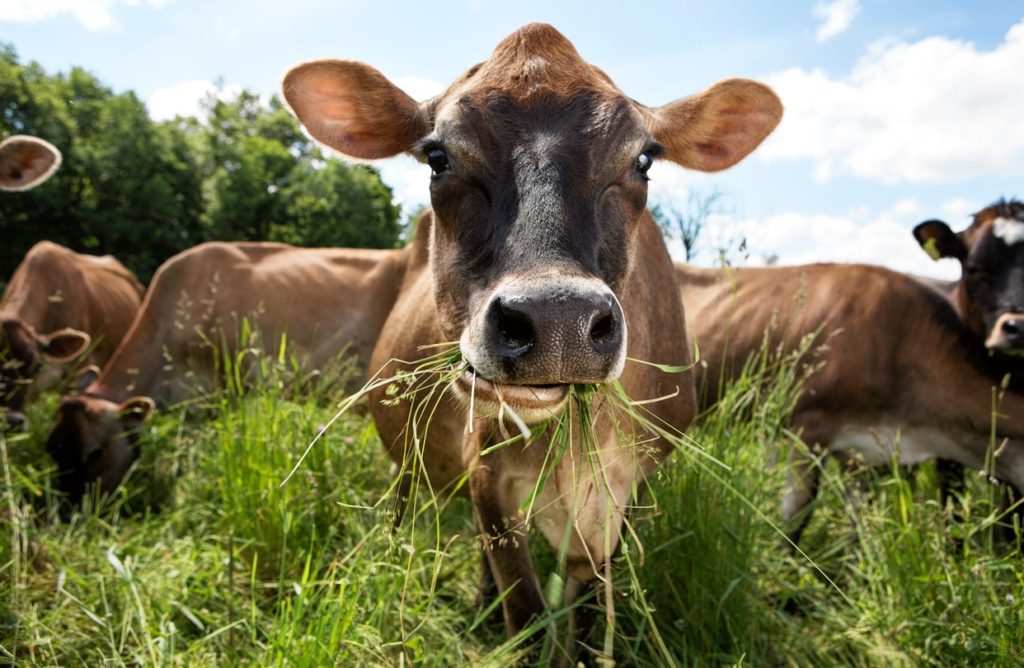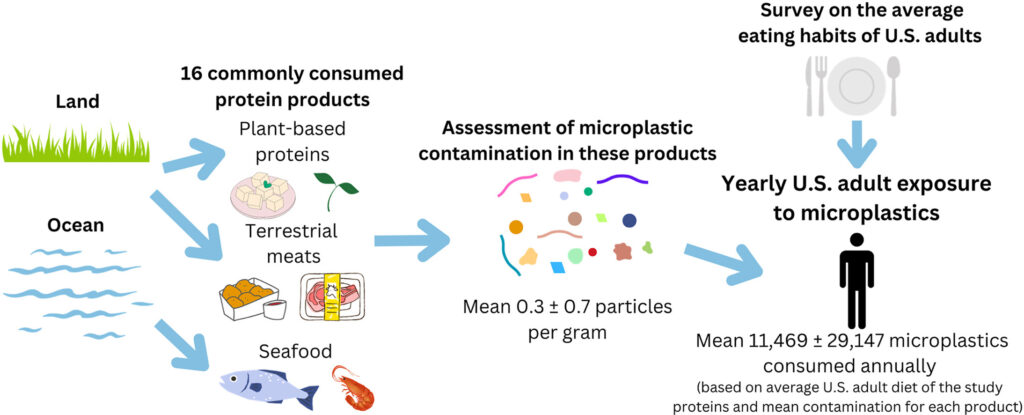Microplastics are plastic particles that measure less than 5 millimeters in diameter. One millimeter is 0.0393701 inches, an amount that is equivalent to a sharp pencil point. Nanoplastics, the subject of our next article, are even smaller and are measured in nanometers instead of a millimeters.
Some microplastics, such as the microbeads used in personal care products like toothpaste and shampoo, are manufactured to be very small and are added to provide abrasion. Yet microparticles are also created when larger plastic items, such as bottles and bags, break down in the environment.
Today, microplastics are found in oceans, rivers, soil, and even the air. Because they’re so small, microplastics are ingested by fish and birds. They’re also ingested by cows, which affects the beef that humans consume.
How Do Microplastics Enter the Food Chain?
Animals such as cows ingest microplastics that are present in feeds and forages. Plastic packaging is used with animal feeds, but microplastics are also found in surface water and groundwater. Cows drink this water, but they also ingest grasses and other plants that are irrigated. If they are small enough, microplastics are then absorbed through the plants’ roots, transported to the plant’s edible parts, and enter the food chain.

Microplastics and Human Health
Aside from the environmental pollution that they cause, microplastics are a problem because they contain chemicals that could affect the health of plants and animals, including humans. In laboratory tests, microplastics have been shown to cause damage to human cells, including allergic reactions and cell death. A 2024 study published in Toxicological Sciences found microplastics in every one of 62 human placentas tested, with concentrations ranging from 6.5 to 790 micrograms per gram of issues. In children and adults, no large-scale epidemiologic studies have been performed to date.
Earlier this year, scientists from the Ocean Conservancy and the University of Toronto studied microplastic contamination in 16 protein products, including seafoods, meats, and plant-based proteins. The researchers found microplastics in 90% of the samples that were tested and estimated that the mean annual exposure of American adults is 11,000 ±29,000 particles, with a maximum estimated exposure of 3.8 million per year.
There is no known “safe” or “unsafe” limit for microplastic ingestion.
Microplastics on the Menu
It’s important to note that highly-processed protein products contain the most microplastics per serving. For example, breaded shrimp contains an average of over 300 microplastic pieces while fresh-caught White Gulf shrimp contains an average of less than 20 microplastic particles. Yet it’s unclear why this is the case. For example, is it because of the breaded shrimp’s packaging, or are microplastics also in the breading itself?
Top sirloin steak, the only beef product that the researchers studied, is far closer to the fresh-caught White Gulf shrimp than to the breaded shrimp. Pork loin chop and chicken breast had the fewest number of microplastic particles per serving, and a significantly smaller number than plant-based nuggets. Because fresh fruits and vegetables also contain microplastics, this is not an issue that’s limited to meat-eaters.
Lab-grown meat wasn’t studied for microplastics, and there are other unknowns about its health affects.

Additional Risks and Research
Microplastics may pose additional risks to plant and animal health because harmful microorganisms can adhere to these tiny particles. In turn, this promotes the multiplication of microbes and their spread to body tissue. If microbes such as bacteria contain contaminants like heavy metals and antibiotics, microplastics could contribute to toxicity and even antibiotic resistance in the human organism.
There’s plenty of room for additional research, and Go Natural Education will continue to report on this issue as data becomes available.
